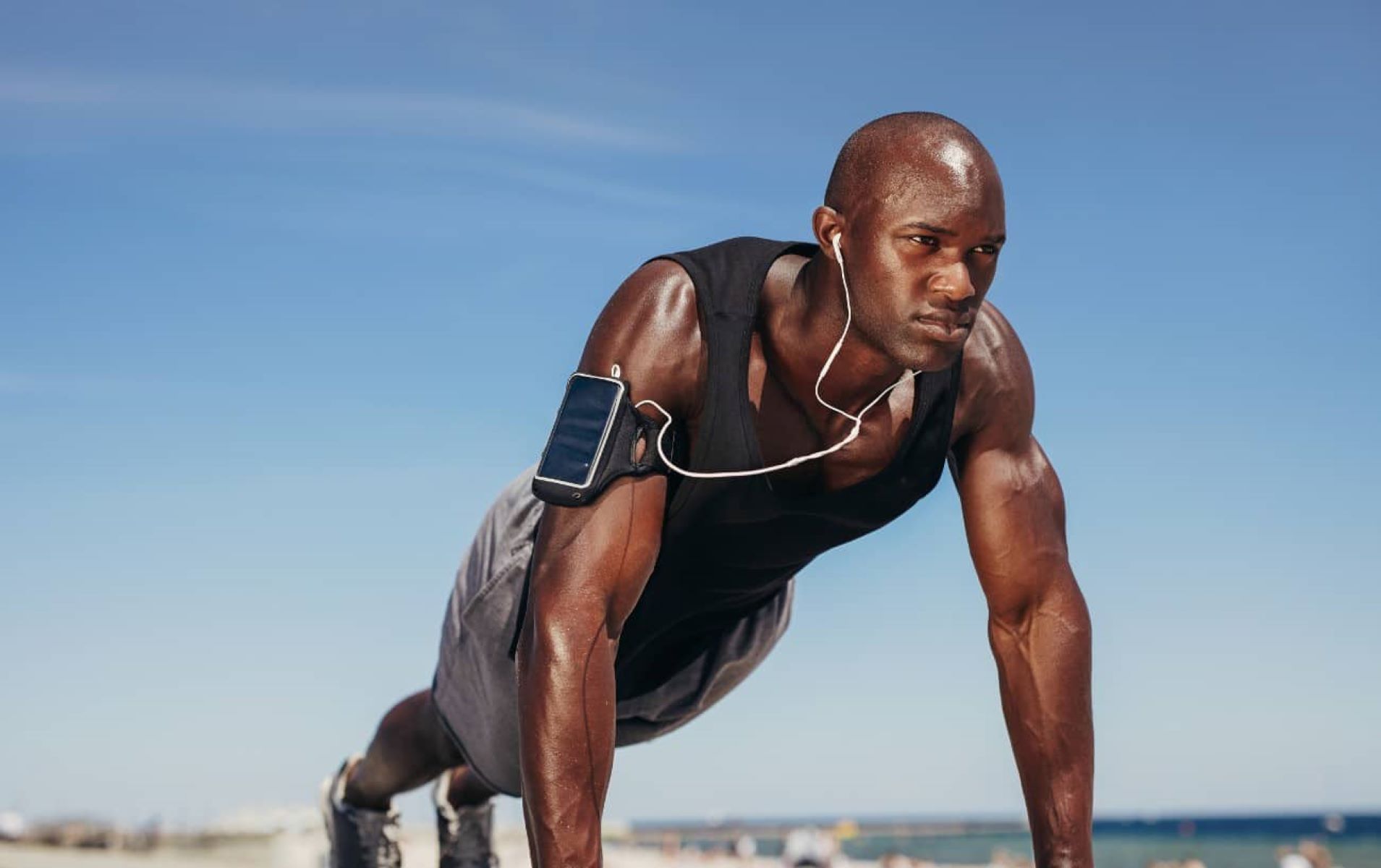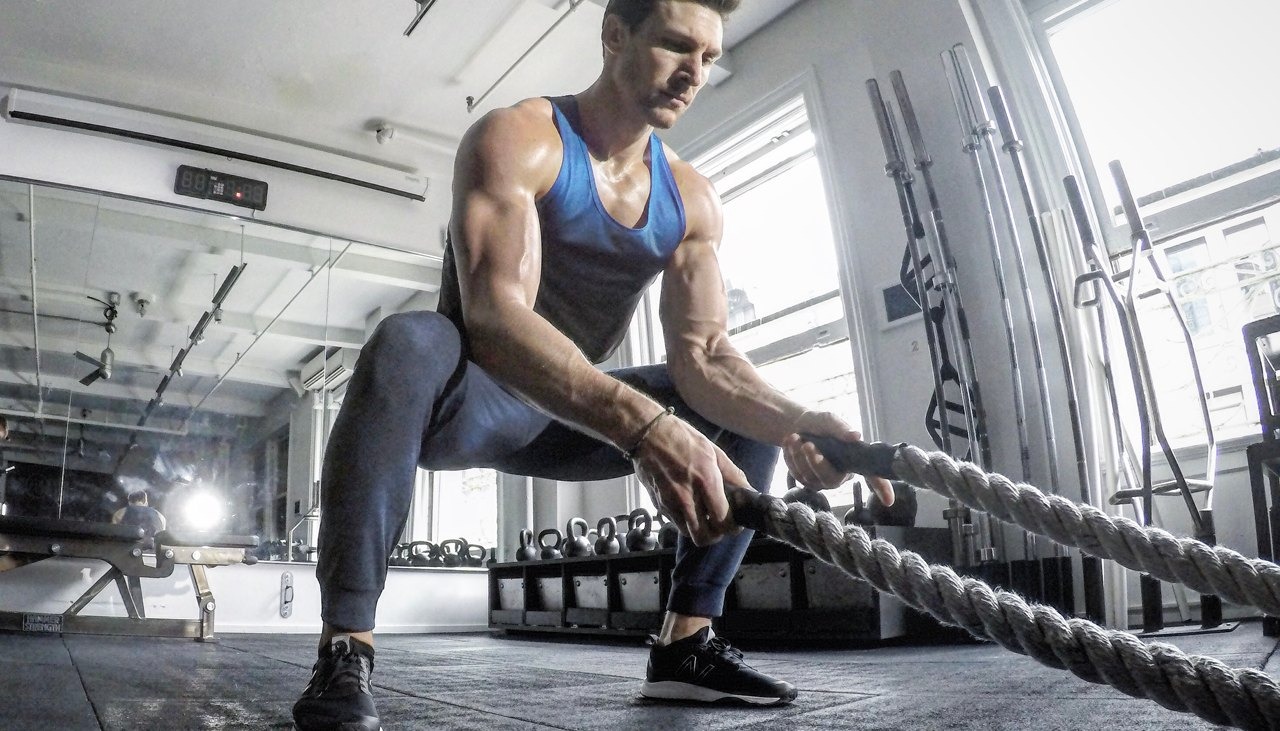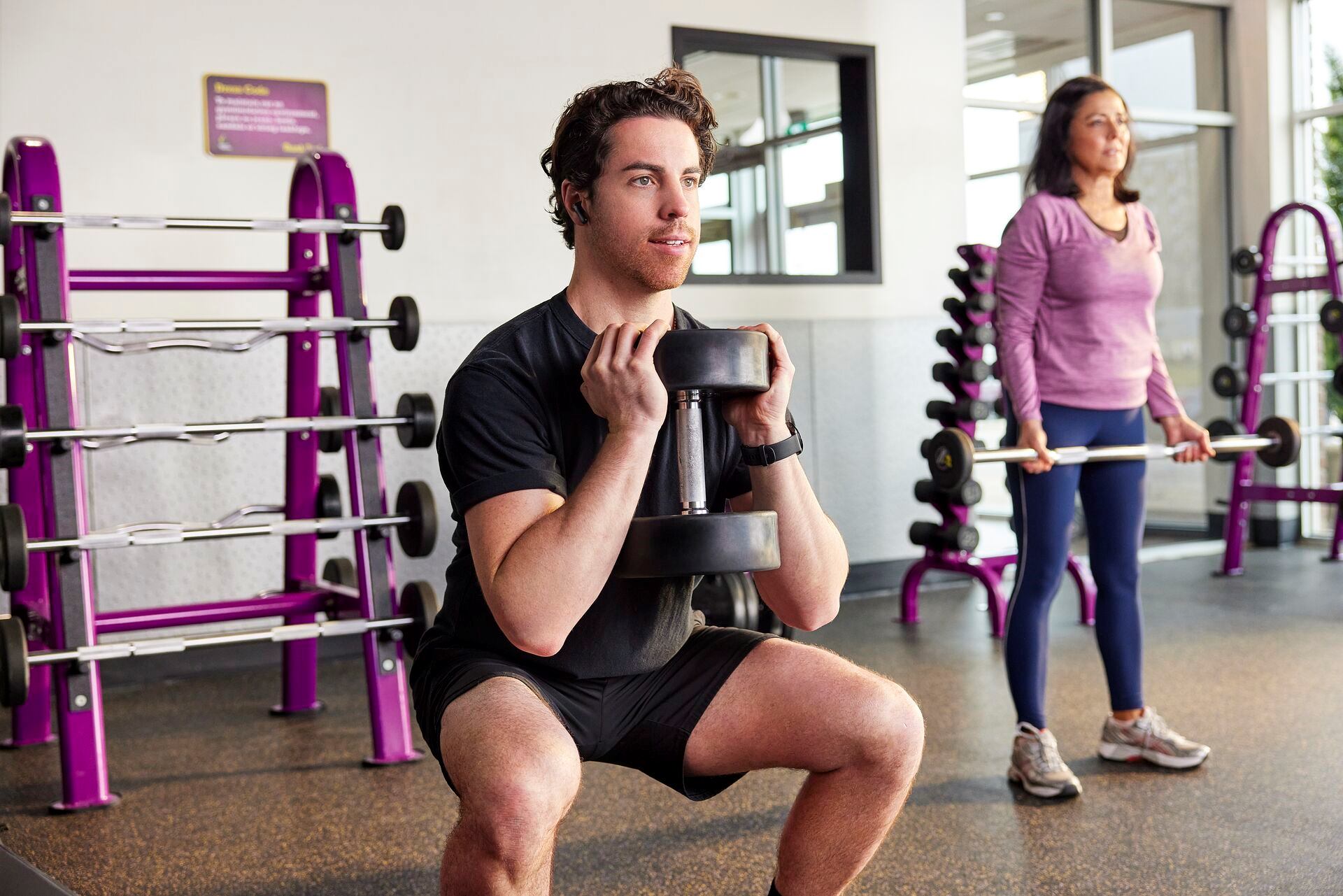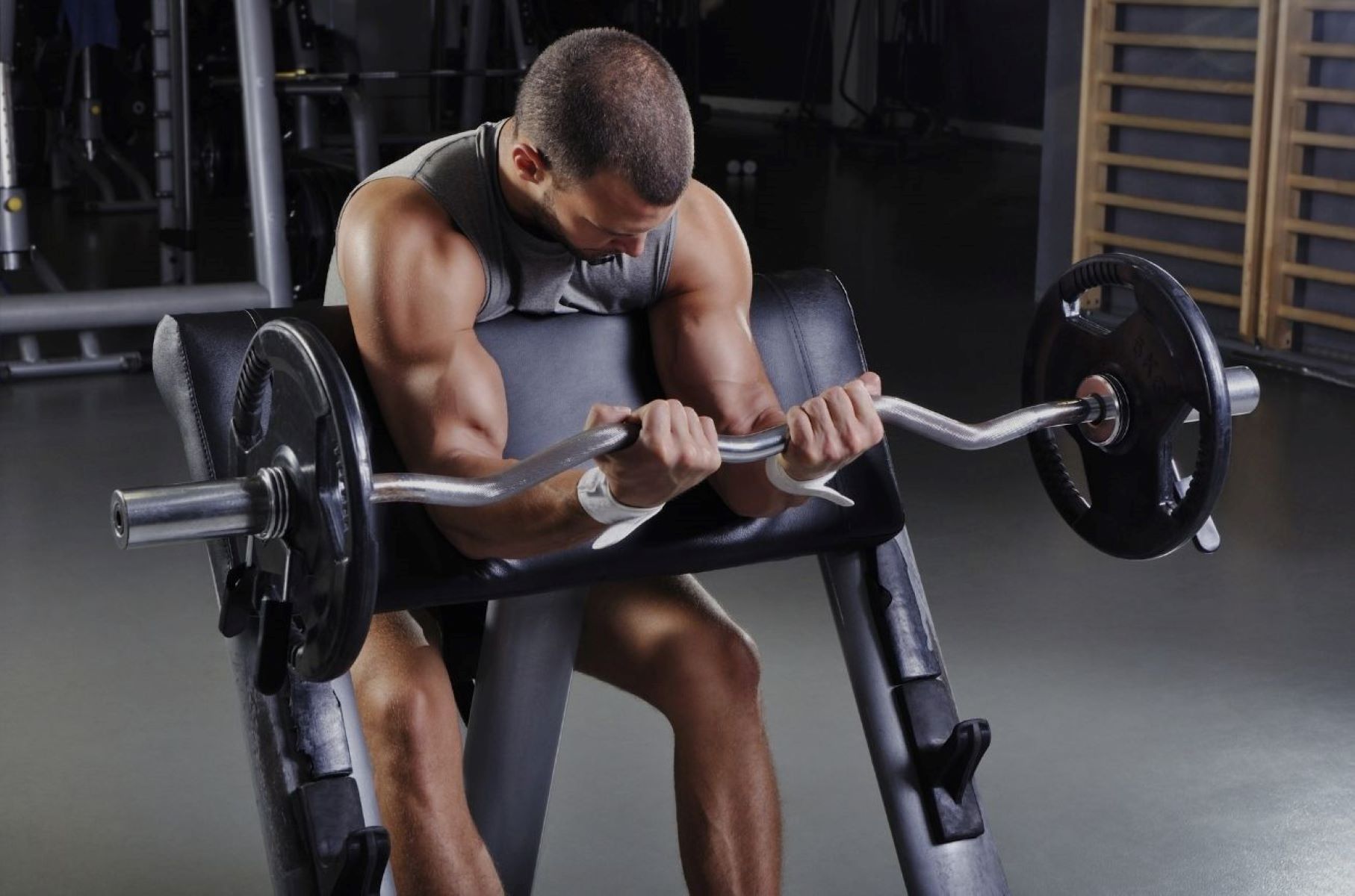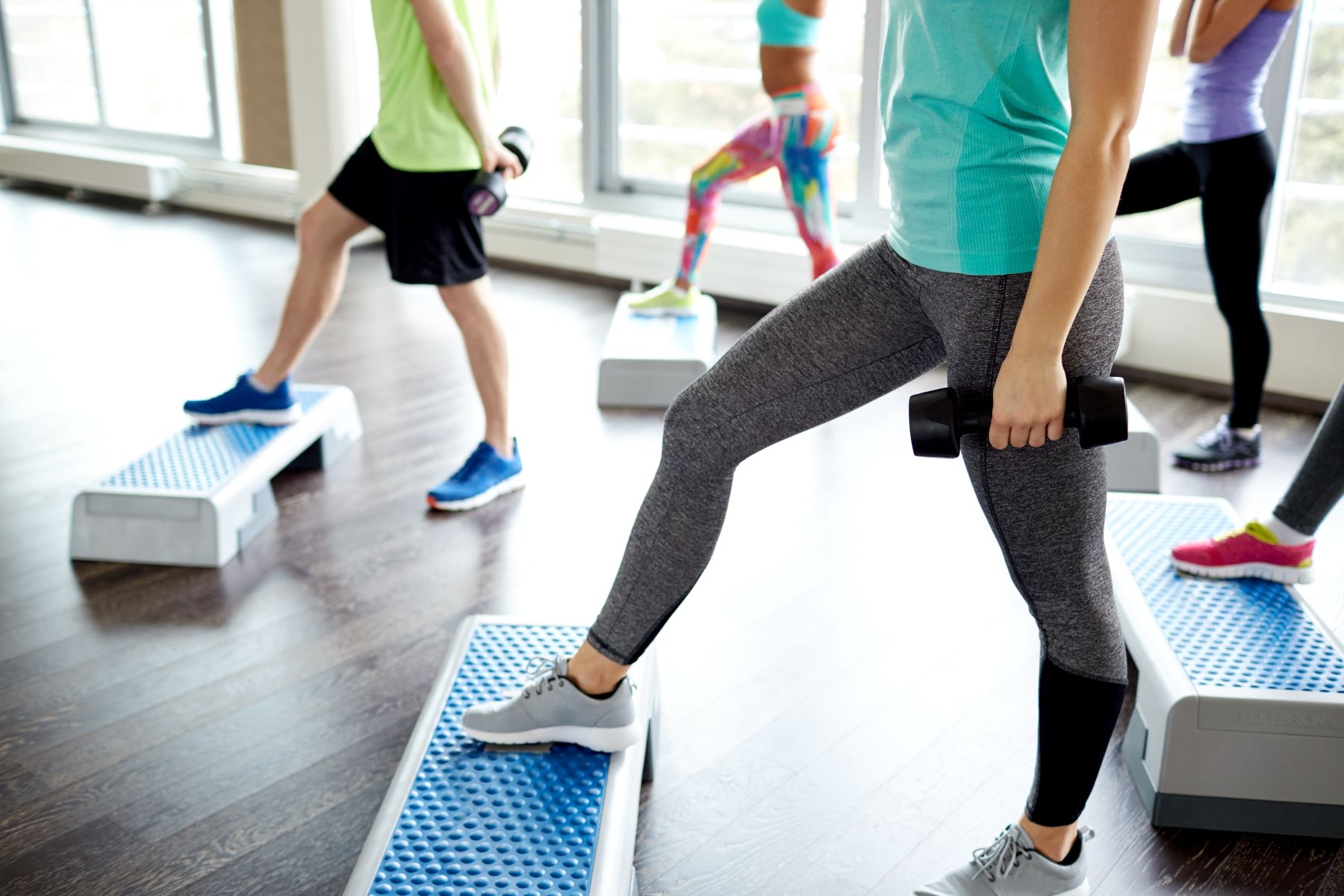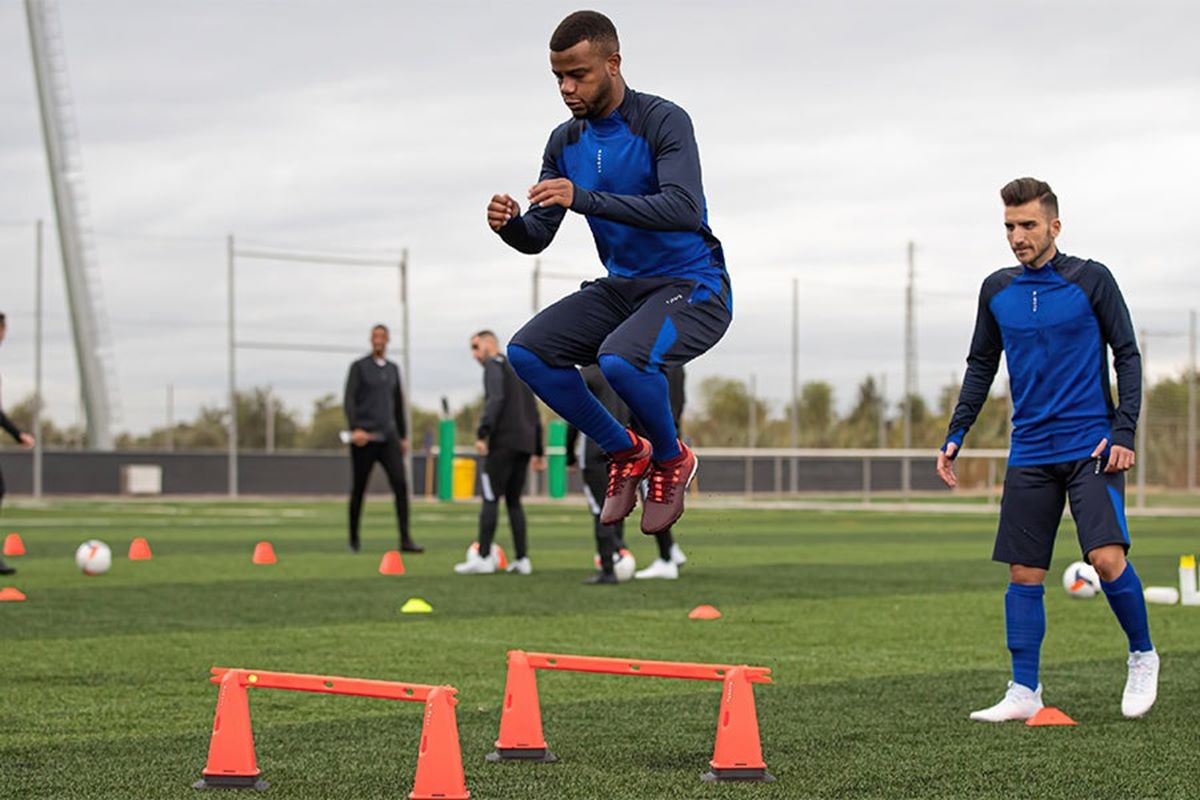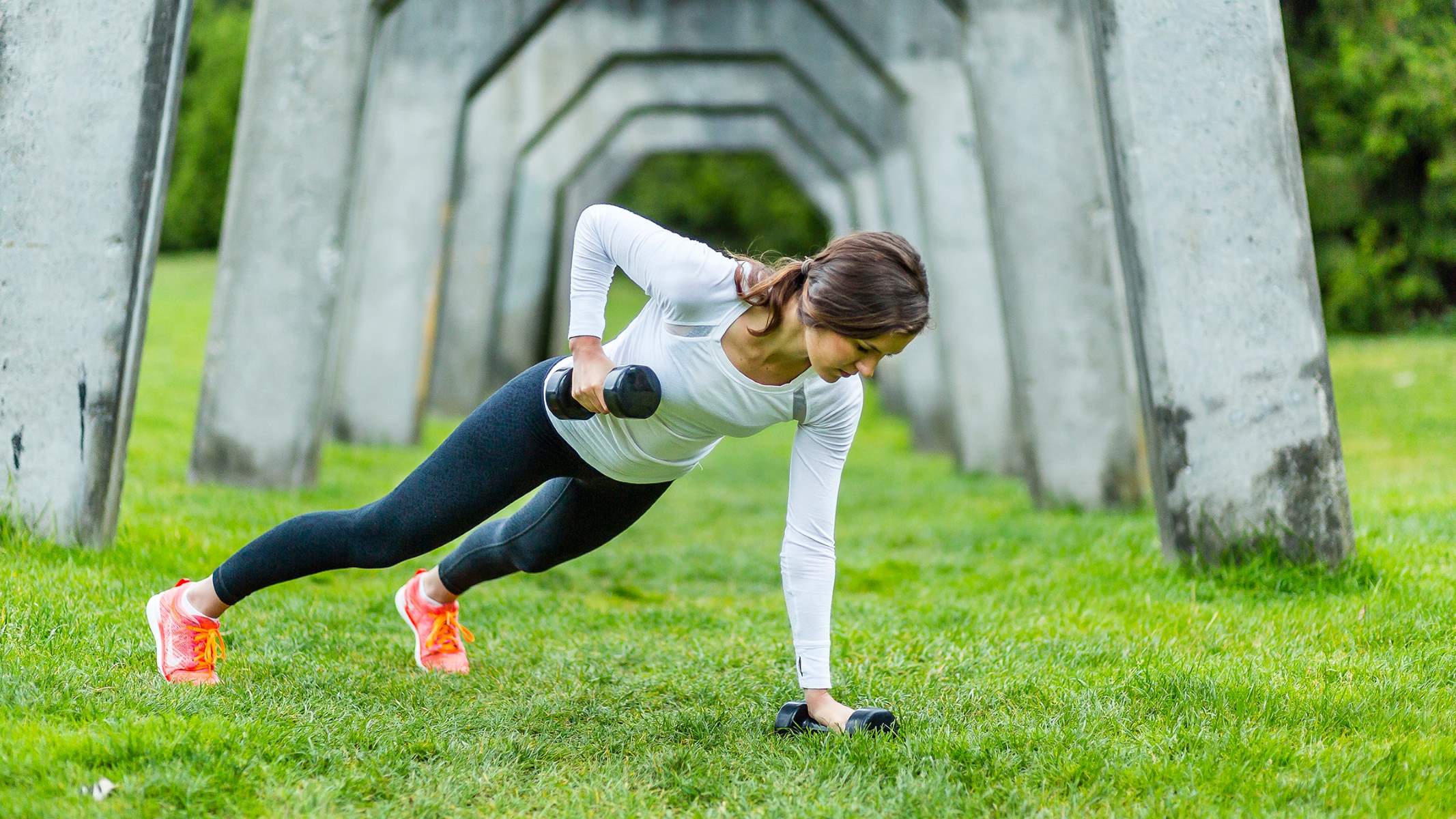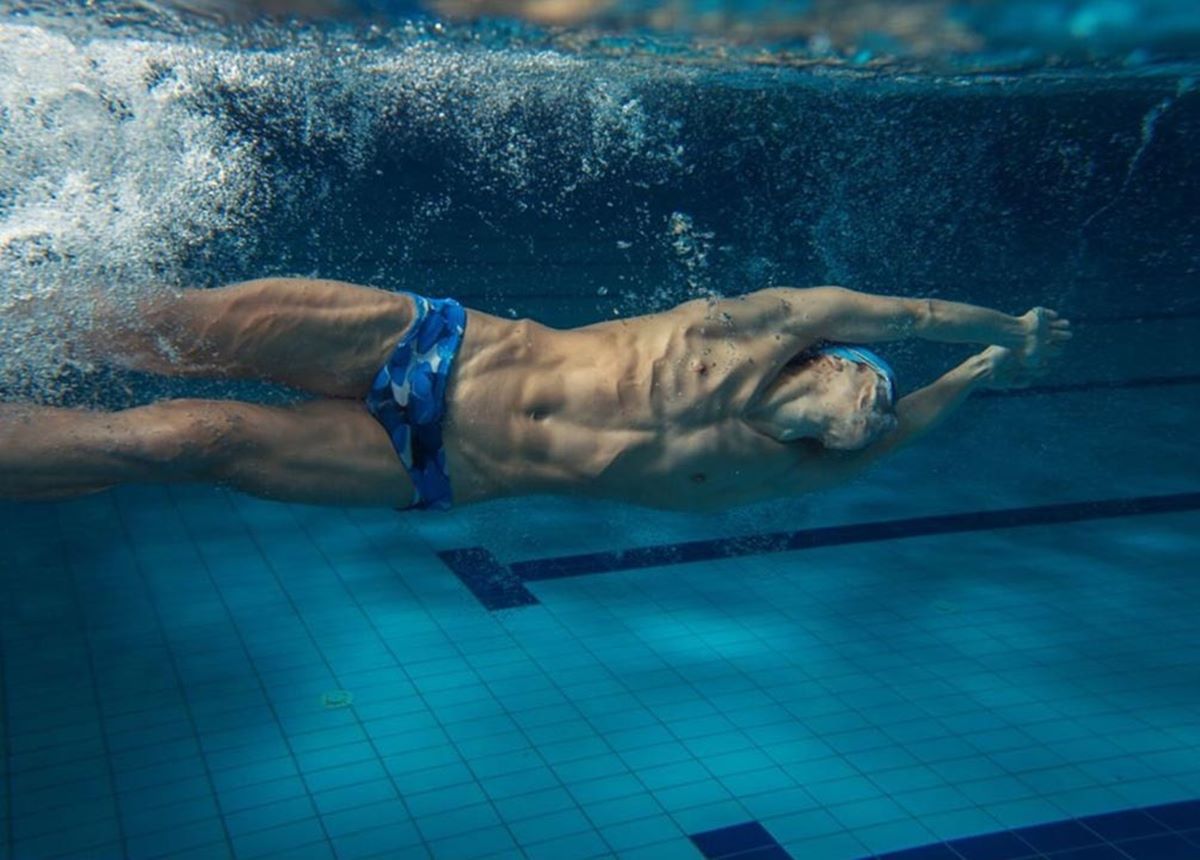

Featured
How To Improve Swimming Stamina
Modified: August 21, 2023
Improve your swimming stamina with our featured tips and techniques. Enhance your endurance in the water and swim stronger for longer.
Introduction
Swimming is not only a great way to stay active and fit, but it also provides numerous health benefits for both the body and mind. Whether you’re a competitive swimmer, a recreational swimmer, or just starting out, improving your swimming stamina is essential for maximizing your performance and enjoying longer and more efficient swims.
When it comes to swimming stamina, it’s not just about how long you can swim, but also how efficiently you can maintain your energy and endurance throughout your swim. Having good swimming stamina allows you to swim longer distances, maintain proper technique and form, and avoid fatigue and injuries.
In this article, we will explore various techniques and strategies to help you improve your swimming stamina. By incorporating these tips into your training routine, you can gradually build your endurance and take your swimming to the next level.
Whether you’re a beginner or an experienced swimmer, these tips can benefit you in your swimming journey. So let’s dive in and discover how to boost your swimming stamina!
Importance of Swimming Stamina
Having good swimming stamina is crucial for swimmers of all levels, from beginners to professional athletes. Here are some reasons why building and improving your swimming stamina is important:
- Endurance in the water: Swimming stamina allows you to swim for longer periods without feeling fatigued. This is especially important for competitive swimmers who participate in distance events or open water races.
- Efficient technique: When you’re tired, it’s natural for your technique to suffer. However, with improved stamina, you’ll be able to maintain proper form throughout your swim, which helps you swim more efficiently and reduce the risk of injuries caused by incorrect alignment or muscle imbalances.
- Increased cardiovascular fitness: Swimming is an excellent cardiovascular exercise that strengthens your heart and improves lung capacity. By building your swimming stamina, you’ll enhance your overall cardiovascular fitness, which has a positive impact on your overall health.
- Enhanced mental endurance: Swimming requires mental focus and resilience. Building your swimming stamina not only strengthens your physical endurance but also develops mental endurance, allowing you to stay focused and motivated during challenging workouts or competitions.
- Enjoyment and fun: With improved swimming stamina, you’ll be able to enjoy longer, more enjoyable swims. Whether you swim for recreation or as a stress-reliever, having the stamina to swim comfortably for extended periods allows you to fully immerse yourself in the water and experience the numerous benefits of swimming.
No matter what your swimming goals are, having good stamina is essential for achieving them. Whether you aim to compete in races, complete a long-distance swim, or simply want to improve your overall fitness, building your swimming stamina will help you reach your goals and enhance your swimming experience.
Proper Technique and Form
Having proper technique and form is fundamental to improving your swimming stamina. When you swim with correct technique, you reduce drag and energy expenditure, allowing you to swim for longer periods without getting tired. Here are a few tips to help you maintain proper technique and form:
- Body alignment: Maintain a straight and streamlined body position in the water. Keep your head in line with your body, and avoid lifting it too high or letting it sink too low. This helps reduce drag and improve efficiency.
- Proper breathing: Breathe rhythmically and efficiently by exhaling fully underwater and inhaling quickly when turning your head to the side. Avoid holding your breath as it can lead to tension and fatigue. Practice bilateral breathing to improve lung capacity and balance your stroke.
- Strong core: Engage your core muscles to maintain stability and control in the water. A strong core helps you maintain proper body alignment, reduces unnecessary movements, and improves overall efficiency.
- Effective arm stroke: Focus on a smooth and consistent arm stroke. Reach forward with a fully extended arm, initiate the catch, and pull through the water using the larger muscles of your back and core. Avoid excessive downward movement of the hand during the recovery phase as it can waste energy.
- Efficient leg kick: Use a kick that complements your stroke and promotes forward propulsion. Avoid excessive kicking or kicking from the knee, as it can lead to fatigue. Instead, focus on a relaxed and fluid leg kick, utilizing your core and hip muscles.
- Underwater dolphin kicks: Mastering the underwater dolphin kick can significantly improve your speed and efficiency. Practice dolphin kicks off the walls and during underwater phases between strokes to maintain momentum and conserve energy.
Remember, proper technique and form require practice and focus. Take the time to analyze your strokes, seek feedback from a coach or experienced swimmer, and incorporate drills into your training sessions to refine your technique. By swimming with proper technique, you’ll optimize your energy expenditure, reduce resistance, and increase your swimming stamina.
Consistent Training
Consistency is key when it comes to improving your swimming stamina. Regular training builds endurance, enhances cardiovascular fitness, and improves overall performance in the water. Here are some tips to help you maintain consistency in your swimming training:
- Establish a training schedule: Set a training schedule that fits your lifestyle and commit to it. Whether it’s three times a week or five times a week, consistency is more important than the frequency of your training. Stick to your schedule and make swimming a regular part of your routine.
- Gradually increase distance and intensity: Begin with a comfortable distance and gradually increase it over time. This allows your body to adapt and build endurance without overexertion or risk of injury. Similarly, gradually increase the intensity of your workouts by incorporating interval training or higher-paced sets.
- Focus on quality over quantity: It’s better to have shorter but more focused and intense workouts than long but ineffective ones. Pay attention to your technique, push yourself during challenging sets, and make every swim count.
- Set specific goals: Setting measurable and realistic goals can help motivate you and keep you on track. Whether it’s swimming a certain distance, improving your lap times, or mastering a new stroke, having goals gives you a sense of purpose and direction in your training.
- Vary your workouts: Keep your training sessions interesting and challenging by varying the types of workouts you do. Incorporate different strokes, drills, and swimming sets to target different muscle groups and improve overall fitness. This also helps prevent boredom and plateaus in your progress.
- Listen to your body: Pay attention to your body’s signals and adjust your training accordingly. If you’re feeling fatigued or experiencing muscle soreness, take a rest day or engage in active recovery activities like stretching or light swimming. Rest and recovery are just as important as training to prevent injuries and allow your body to heal and rebuild.
Consistent training is essential for building swimming stamina. By following these tips and making swimming a regular part of your routine, you’ll gradually increase your endurance, improve your cardiovascular fitness, and see progress in your overall performance in the water.
Interval Training
Interval training is a highly effective method for improving swimming stamina. It involves alternating periods of high-intensity effort with periods of rest or lower-intensity activity. This type of training not only increases your cardiovascular fitness but also helps build endurance and improve your overall swimming performance. Here are some key points to consider when incorporating interval training into your swimming routine:
- Choose appropriate intervals: Determine the duration and intensity of your intervals based on your fitness level and swimming goals. Start with shorter intervals and gradually increase the duration or intensity as you progress. For example, you might swim at a faster pace for 25 or 50 meters, followed by a period of active recovery or rest.
- Vary the interval lengths: Mix up the lengths of your intervals to challenge different energy systems and keep your workouts interesting. Incorporate shorter, more intense intervals to improve speed and anaerobic capacity, and longer intervals to enhance endurance and aerobic capacity.
- Include timed rest or active recovery: Allow yourself enough recovery time between intervals to avoid excessive fatigue. You can either rest completely or engage in active recovery, such as swimming at a slower pace or performing drills. The length of the rest period will depend on the intensity and duration of the interval.
- Focus on technique: While interval training can be intense, it’s important to maintain good technique and form throughout each interval. Avoid sacrificing your technique for the sake of speed. Concentrate on maintaining proper body alignment, efficient strokes, and effective breathing during each interval.
- Track your progress: Keep a record of your interval training sessions to track your progress over time. Monitor the distances covered, times achieved, and any improvements in your stroke efficiency. This will help you set future goals and measure your overall performance gains.
- Gradually increase the intensity: As your fitness level improves, gradually increase the intensity of your intervals. This could include swimming at a faster pace, decreasing the rest time, or adding more challenging swimming drills to your interval sets.
Interval training is a versatile and effective method for improving your swimming stamina. Incorporate it into your training routine on a regular basis to challenge yourself, build endurance, and enhance your overall swimming performance.
Building Endurance
Building endurance is a crucial component of improving your swimming stamina. It involves gradually increasing the time and distance you swim to enhance your cardiovascular fitness and muscular endurance. Here are some tips to help you effectively build endurance in the water:
- Set realistic goals: Start by setting achievable goals that align with your current fitness level. Aim to increase your swimming distance or time by small increments each week. This gradual progression will prevent overexertion and reduce the risk of injuries.
- Swim consistently: Consistency is key in building endurance. Make swimming a regular part of your routine and commit to swimming sessions several times a week. This allows your body to adapt, improve its efficiency, and gradually build endurance.
- Progress your workouts: Gradually increase the intensity and duration of your workouts over time. This could involve swimming an extra lap, adding an additional set, or increasing your pace for certain intervals. Continually challenging yourself will push your limits and stimulate your body’s adaptation process.
- Include long-distance swims: Incorporate longer swims into your training routine to improve your endurance. Aim to swim continuously without stopping, gradually increasing the distance as you feel more comfortable. Long-distance swims simulate endurance events and help condition your body for longer durations in the water.
- Focus on pacing: Establish a sustainable pace when building endurance. Avoid starting too fast and burning out quickly. Instead, find a comfortable and steady pace that allows you to maintain proper technique and form throughout your swim. As your endurance improves, you can gradually increase your speed.
- Use interval training: Interval training can be an effective way to build endurance. Alternate between periods of higher intensity swimming and active recovery or rest. This approach challenges your cardiovascular system, improves your aerobic capacity, and enhances your overall stamina.
- Stay mentally focused: Building endurance requires mental resilience. Stay focused, positive, and motivated during your swims, especially when fatigue sets in. Use visualization techniques, set small goals within each swim, and remind yourself of the benefits and achievements you’ll experience by improving your endurance.
Building endurance takes time and consistent effort. Be patient with your progress and celebrate small milestones along the way. By gradually increasing your swimming distance and time, incorporating interval training, and maintaining a positive mindset, you’ll steadily improve your swimming stamina and conquer longer and more challenging swims.
Cross-Training
Cross-training is a valuable addition to your swimming routine and can significantly improve your swimming stamina. By incorporating different forms of exercise, you can strengthen your muscles, prevent muscle imbalances, and enhance your overall fitness. Here are some cross-training activities that can complement your swimming and boost your endurance:
- Running or jogging: Running or jogging is an excellent cardiovascular exercise that complements swimming by engaging different muscle groups and improving overall endurance. Start with shorter distances and gradually increase your running time or distance as you progress.
- Cycling: Cycling is a low-impact activity that builds leg strength, endurance, and cardiovascular fitness. It provides an alternative form of aerobic exercise and helps condition your muscles in a different way compared to swimming.
- Strength training: Incorporating strength training exercises can improve your overall muscular strength and endurance. Focus on exercises that target the major muscle groups used in swimming, such as the core, back, shoulders, and arms. This includes exercises like squats, lunges, rows, and shoulder presses.
- Yoga or Pilates: Yoga and Pilates can help improve flexibility, core stability, and body awareness. These activities promote correct posture, breathing techniques, and relaxation, which can benefit your swimming technique and increase your stamina.
- HIIT exercises: High-Intensity Interval Training (HIIT) workouts can be a great addition to your cross-training routine. HIIT exercises involve short bursts of intense activity followed by brief recovery periods. These workouts boost cardiovascular fitness and increase your anaerobic capacity, which can have a positive impact on your swimming endurance.
- Water-based cross-training: Engaging in other water-based activities, such as water aerobics, water jogging, or water polo, can help improve overall fitness, cardiovascular endurance, and provide a refreshing break from traditional swimming workouts.
When incorporating cross-training into your routine, aim to have a balanced approach. Allow sufficient time for recovery and avoid overtraining by alternating your swimming workouts with cross-training activities. By diversifying your exercise routine, you’ll target different muscle groups, prevent boredom, and improve your overall fitness, contributing to enhanced swimming stamina.
Proper Breathing Techniques
Proper breathing techniques play a crucial role in improving your swimming stamina. Efficient breathing not only provides the necessary oxygen to your muscles but also helps you maintain a steady rhythm and relaxed state in the water. Here are some tips to help you master proper breathing techniques in swimming:
- Breathe out continuously: One common mistake swimmers make is holding their breath underwater. Instead, make sure to exhale smoothly and continuously while your face is in the water. This helps release carbon dioxide and prepares your lungs for a quick inhalation when you turn your head to breathe.
- Time your exhalation and inhalation: Coordinate your breathing with your stroke to optimize efficiency. Exhale fully as you complete your arm pull and begin turning your head to the side for inhalation. Inhale quickly and deeply, taking advantage of the brief moment your mouth is out of the water.
- Bilateral breathing: Practice breathing to both sides during your swim to enhance your balance, rhythm, and endurance. Bilateral breathing helps prevent muscle imbalances and neck strain, as well as improves your overall breathing efficiency.
- Relax your face and jaw: Tension in your face and jaw can hinder your ability to breathe properly. Keep your facial muscles relaxed, your jaw slightly open, and avoid clenching your teeth. This allows for smoother breathing and reduces unnecessary tension throughout your body.
- Practice breath control: Incorporate breath control exercises into your training to improve your lung capacity and breath-holding ability. Gradually increase the time you spend underwater without breathing, focusing on maintaining relaxed and controlled breathing patterns when you resurface.
- Utilize flip turns: Flip turns can be an efficient way to transition and maintain your momentum during a swim. Practice flip turns to minimize the time spent with your face out of the water, allowing for a more continuous and rhythmic breathing pattern.
- Stay aware of your breathing: Be mindful of your breathing patterns and make adjustments as needed. If you notice yourself gasping for air or feeling breathless, slow down your pace and focus on maintaining relaxed and controlled breathing throughout your swim.
Developing proper breathing techniques takes practice and patience. Incorporate specific breathing drills into your training sessions and pay attention to your breath while swimming. With time and consistency, you’ll improve your breathing efficiency, enhance your swimming stamina, and enjoy longer, more comfortable workouts in the water.
Nutrition and Hydration
Proper nutrition and hydration are essential components in improving your swimming stamina. The food and fluids you consume directly impact your energy levels, muscle function, and overall performance in the water. Here are some key points to consider when it comes to nutrition and hydration for swimming:
- Stay hydrated: Dehydration can quickly lead to fatigue and decreased performance. Drink water regularly throughout the day, and make sure to hydrate before, during, and after your swim. Avoid sugary drinks or caffeinated beverages, as they can have a diuretic effect and contribute to dehydration.
- Eat a balanced diet: A well-balanced diet that includes a variety of fruits, vegetables, whole grains, lean proteins, and healthy fats is important for overall health and energy levels. Ensure you’re getting the necessary nutrients to support your swimming stamina and recovery.
- Consume carbohydrates: Carbohydrates are the primary source of fuel for your muscles. Incorporate complex carbohydrates such as whole grains, fruits, and vegetables into your meals to provide a steady release of energy during your swim.
- Include lean proteins: Protein is crucial for muscle repair and growth. Include lean sources of protein such as chicken, fish, beans, and tofu in your meals to aid in muscle recovery after intense swimming sessions.
- Stay fueled before your swim: Eat a light and balanced meal 1-2 hours before your swim to ensure you have enough energy to sustain your workout. Opt for easily digestible foods such as oatmeal, yogurt, or a banana to provide a mix of carbohydrates and protein.
- Refuel after your swim: After your swim, replenish your energy stores by consuming a post-workout snack or meal. Including carbohydrates and protein in your post-swim snack or meal will aid in muscle recovery and replenish glycogen stores.
- Listen to your body: Pay attention to how your body responds to different foods and adjust your diet accordingly. Everyone’s nutritional needs are unique, so incorporate foods that make you feel energized and avoid those that make you feel sluggish or uncomfortable during your swim.
- Consider sports drinks or electrolyte supplements: If you have an intense and prolonged swim session, particularly in hot conditions, consider consuming a sports drink or electrolyte supplement to replenish electrolytes lost through sweat and maintain fluid balance.
Remember, nutrition and hydration are ongoing practices. Make healthy choices consistently and adapt your eating and drinking habits to meet the demands of your swimming routine. By fueling your body with the right nutrients and staying properly hydrated, you will optimize your swimming stamina, enhance your performance, and support overall well-being.
Rest and Recovery Techniques
Rest and recovery are essential aspects of improving your swimming stamina. Allowing your body time to rest and repair itself is just as important as the time you spend training in the water. Here are some rest and recovery techniques to incorporate into your swimming routine:
- Get enough sleep: Aim for 7-9 hours of quality sleep per night. Sleep is when your body repairs and replenishes itself, allowing for optimal recovery and performance. Prioritize a consistent sleep schedule to ensure adequate rest.
- Take regular rest days: Plan rest days into your training schedule to give your body time to recover and prevent overtraining. Rest days allow your muscles, joints, and energy systems to repair and adapt, leading to improved stamina and performance.
- Incorporate active recovery: Engage in low-intensity activities on rest days, such as light swimming, yoga, or gentle stretching. Active recovery promotes blood circulation, helps flush out metabolic waste, and aids in muscle recovery.
- Practice self-care: Take care of your body by incorporating practices like foam rolling, massage, or stretching into your routine. These techniques can help alleviate muscle tension, reduce soreness, and improve flexibility.
- Hydrate and refuel: Properly hydrate and refuel your body after each swim. Consuming a balanced post-swim snack or meal and drinking plenty of water helps replenish energy stores and supports muscle repair.
- Use cold water therapy: Cold water therapy, such as ice baths or cold showers, can help decrease inflammation and promote muscle recovery. Take a few minutes after intense swims to immerse yourself in cold water or use ice packs on areas of soreness.
- Practice relaxation techniques: Incorporate relaxation techniques such as deep breathing exercises, meditation, or yoga to reduce stress and promote mental and physical recovery. Relaxation techniques can also improve sleep quality and enhance overall well-being.
- Listen to your body: Pay attention to your body’s signals and adjust your training or recovery plan accordingly. If you’re feeling excessively fatigued or experiencing persistent muscle soreness, consider taking additional rest or recovery days.
Remember that rest and recovery are integral parts of your training journey. By prioritizing rest, engaging in active recovery practices, and taking care of your body, you’ll optimize your swimming stamina, prevent injuries, and improve your long-term performance in the water.
Conclusion
Improving your swimming stamina is a journey that requires dedication, consistency, and a holistic approach. By implementing the strategies and techniques outlined in this article, you can gradually enhance your endurance, optimize your performance, and enjoy longer and more efficient swims.
Proper technique and form, consistent training, interval training, building endurance, cross-training, proper breathing techniques, nutrition and hydration, and rest and recovery techniques all play integral roles in improving your swimming stamina. By focusing on these areas, you’ll be able to swim longer distances, maintain efficient strokes, and avoid fatigue and injuries.
Remember to approach your swimming journey with patience and listen to your body. Progress takes time, and every individual’s progress will vary. Celebrate your achievements along the way, whether it’s swimming an extra lap or improving your overall endurance.
Lastly, enjoy the process. Swimming is not only a physical workout but also a rewarding and enjoyable activity. Embrace the sensation of gliding through the water, appreciate the connection with your body and mind, and find joy in the journey towards improving your swimming stamina.
